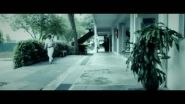(Press-News.org) Until now, rings of material in a disc have only been observed around giant planets like Jupiter, Uranus, Neptune and especially Saturn, which is known for its spectacular rings. Now astronomers from the Niels Bohr Institute, among others, have observed the first miniature planet with two rings of ice and pebbles. It is a smaller celestial body, called Chariklo, located two billion kilometers out in the solar system between Saturn and Uranus. The results are published in the prestigious scientific journal, Nature.
Chariklo was located in the Kuiper Belt, a collection of thousands of dwarf planets and comets in orbit beyond Neptune on the edge of our solar system. But at some point it was thrown out of this belt and is now between Saturn and Uranus, where there is a collection of small objects, called Centaur. Chariklo is the largest of these objects with a diameter of 250 km. This comet like object has been known for many years, but despite careful study, its rings have never been observed before now. This has happened because a new camera is now being used on the Danish telescope at ESO's La Silla Observatory in Chile.
Surprising discovery of rings
"The camera was specially developed at the Niels Bohr Institute and has a stunningly high resolution, which we especially exploit to look for exoplanets. But when the area where we are looking for exoplanets isn't 'up' in the sky, we use our observation time for other projects and so we followed Chariklo, which just passed in front of a star," explains Uffe Gråe Jørgensen, an astronomer in Astrophysics and Planetary Science at the Niels Bohr Institute at the University of Copenhagen.
He explains that when an object passes in front of a star there is a small dip in the star's brightness and they could see that there was also a dip in the brightness outside the object. This showed that there was a ring of material in a disc around the little object, Chariklo.
"We were not even looking for rings, because they had never been observed around small objects like Chariklo, so it is a totally surprising discovery. The entire passage only lasted 5 seconds, but we could even determine incredible details about the rings. There are two separate thin rings, which are comprised of ice particles and pebbles. The two rings are only 3 and 7 km wide and no more than a few hundred meters thick. There are 14 km between the centers of the two rings and there is a 9 km wide gap between them. They have been measured at a distance of two billion kilometers with an accuracy of plus/minus a few hundred meters. It is really impressive," says Uffe Gråe Jørgensen.
Perhaps formed by collision
How the rings were formed is a mystery, but Uffe Gråe has a clear theory.
"What we are witnessing is perhaps the unveiling of an object that is in the middle of the same stage of development as the Earth and the Moon 4.5 billion years ago, when there was a giant collision between Earth and another planet. In the collision, material hurled out in all directions, forming a circular disc around the Earth, which gradually condensed and formed the Moon. Similarly, we believe that another celestial body crashed into Chariklo and a good deal of material was cast out and formed rings. If the two discs around Chariklo gathers and forms a moon, it will be approximately 2 km in diameter," explains Uffe Gråe.
In addition to the observations with the Danish telescope at La Silla Observatory in Chile, Chariklo was also followed in lower time resolution from six other observatories in South America, which together made it possible to determine Chariklo's shape and size. There were only a few minutes of observations in total, but the result was the breakthrough revelation of the comet like miniature planet Chariklo with the two rings.
INFORMATION:
For more information contact:
Uffe Gråe Jørgensen, Associate professor, Astrophysics and Planetary Science, Niels Bohr Institute, University of Copenhagen, +45 3532-5998, mob.: +45 6130-6640, uffegr@nbi.dk
Cosmic collision creates mini-planet with rings
2014-03-26
ELSE PRESS RELEASES FROM THIS DATE:
New maps for navigating the genome unveiled by scientists
2014-03-26
Scientists have built the clearest picture yet of how our genetic material is regulated in order to make the human body work.
They have mapped how a network of switches, built into our DNA, controls where and when our genes are turned on and off.
University of Edinburgh scientists played a leading role in the international project – called FANTOM5 – which has been examining how our genome holds the code for creating the fantastic diversity of cell types that make up a human.
The three year project, steered by the RIKEN Center for Life Science Technologies in Japan, ...
Keeping secrets in a world of spies and mistrust
2014-03-26
VIDEO:
This is an interview with Professor Artur Ekert, co-inventor of quantum cryptography, about what it takes to keep secrets secret.
Click here for more information.
Revelations of the extent of government surveillance have thrown a spotlight on the security – or lack thereof – of our digital communications. Even today's encrypted data is vulnerable to technological progress. What privacy is ultimately possible? In the 27 March issue of Nature, the weekly international ...
Cell-saving drugs could reduce brain damage after stroke
2014-03-26
Long-term brain damage caused by stroke could be reduced by saving cells called pericytes that control blood flow in capillaries, reports a new study led by scientists from UCL (University College London).
Until now, many scientists believed that blood flow within the brain was solely controlled by changes in the diameter of arterioles, blood vessels that branch out from arteries into smaller capillaries. The latest research reveals that the brain's blood supply is in fact chiefly controlled by the narrowing or widening of capillaries as pericytes tighten or loosen around ...
Should whole-genome sequencing become part of newborn screening?
2014-03-26
That question is likely to stir debate in coming years in many of the more-than-60 countries that provide newborn screening, as whole-genome sequencing (WGS) becomes increasingly affordable and reliable. Newborn screening programs – which involve drawing a few drops of blood from a newborn's heel – have been in place since the late 1960s, and are credited with having saved thousands of lives by identifying certain genetic, endocrine or metabolic disorders that can be treated effectively when caught early enough. Advocates of routine WGS for newborns argue that the new technology ...
Solar System's edge redefined
2014-03-26
Washington, D.C.—The Solar System has a new most-distant member, bringing its outer frontier into focus.
New work from Carnegie's Scott Sheppard and Chadwick Trujillo of the Gemini Observatory reports the discovery of a distant dwarf planet, called 2012 VP113, which was found beyond the known edge of the Solar System. This is likely one of thousands of distant objects that are thought to form the so-called inner Oort cloud. What's more, their work indicates the potential presence of an enormous planet, perhaps up to 10 times the size of Earth, not yet seen, but possibly ...
Penn Dental Medicine-NIH team reverses bone loss in immune disorder
2014-03-26
Patients with leukocyte adhesion deficiency, or LAD, suffer from frequent bacterial infections, including the severe gum disease known as periodontitis. These patients often lose their teeth early in life.
New research by University of Pennsylvania School of Dental Medicine researchers, teaming with investigators from the National Institutes of Health, has demonstrated a method of reversing this bone loss and inflammation.
The work was led by Penn Dental Medicine's George Hajishengallis, professor in the Department of Microbiology, in collaboration with Niki Moutsopoulos ...
Researchers present comprehensive 'roadmap' of blood cells
2014-03-26
(WASHINGTON, March 26, 2014) – Research published online today in Blood, the Journal of the American Society of Hematology, presents an unprecedented look at five unique blood cells in the human body, pinpointing the location of key genetic regulators in these cells and providing a new tool that may help scientists to identify how blood cells form and shed light on the etiology of blood diseases.
Work published today in Blood* is a subset of a much larger catalog of genetic information about nearly 1,000 human cells and tissues unveiled today from the international research ...
3-D MRI scans may offer better way to predict survival after chemo for liver tumors
2014-03-26
In a series of studies involving 140 American men and women with liver tumors, researchers at Johns Hopkins have used specialized 3-D MRI scans to precisely measure living and dying tumor tissue to quickly show whether highly toxic chemotherapy – delivered directly through a tumor's blood supply – is working.
The investigators say their findings, to be presented March 22-27 in San Diego at the annual meeting of the Society of Interventional Radiology, are the first "proof of principle" that this technology can show tumors in three dimensions and accurately measure tumor ...
Lawrence Livermore scientists discover bacterial resistance to improve biofuel production
2014-03-26
Resistance is not futile when it comes to a new method to more efficiently convert biomass to biofuels.
New research by scientists from Lawrence Livermore National Laboratory in conjunction with the Joint BioEnergy Institute (JBEI) suggests that a type of bacterial resistance may provide more efficient production of biofuels.
The team identified the genetic origin of bacterial resistance to an ionic liquid (a salt in the liquid state), which they successfully introduced into a strain of E. coli bacteria for the production of advanced biofuels. The ionic liquid resistance ...
Significant progress toward creating 'benchtop human' reported
2014-03-26
Significant progress toward creating "homo minutus" - a benchtop human -was reported at the Society of Toxicology meeting on Mar. 26 in Phoenix.
The advance - successful development and analysis of a liver human organ construct that responds to exposure to a toxic chemical much like a real liver- was described in a presentation by John Wikswo, the Gordon A. Cain University Professor and Director of the Vanderbilt Institute for Integrative Biosystems Research and Education (VIIBRE) at Vanderbilt University.
The achievement is the first result from a five-year, $19 million ...




